The murder of 26-year-old sea turtle conservationist Jairo Mora in May 2013 exposed cracks in Costa Rica’s international environmental image, and proved that protecting nature sometimes has a terrible cost. Official corruption, lax regulations, and drug trafficking threaten the environmental bounty of Central America’s most visited country. Sadly, seven men have been recently acquitted of the charge, so the injustice continues.
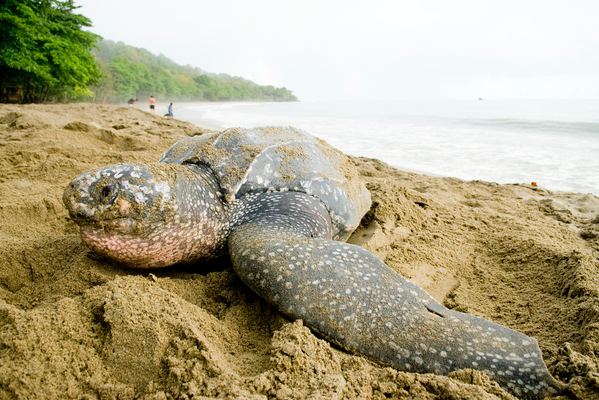

Endangered protectors: Turtle conservationist’s death highlights perils of protecting Costa Rica’s environmental wealth
By Lindsay Fendt in The Tico Times
Costa Rican park rangers switched out their muck boots for loafers and converged on San José two weeks ago for the National Congress of Conservation. After the auditorium slowly filled with rangers in brown uniforms – the standard gear for employees of the Costa Rican National System of Conservation Areas (SINAC) – Roberto Molina, secretary general of the Environment Ministry’s labor union, asked them to stand. He called for a moment of silence in honor of Jairo Mora Sandoval.
It had been nearly a month since Mora, a 26-year-old turtle conservationist working for the Wider Caribbean Sea Turtle Network (WIDECAST), was killed while on patrol. A group of armed masked men kidnapped, beat, tortured and left him to suffocate to death facedown in the sand at Moín Beach, on the Caribbean coast. So far, police have identified two suspects but no arrests have been made in the case.
After three months of trial marked by continuous delays and setbacks, a Limón court on Monday morning acquitted seven men of the murder of 26-year-old sea turtle conservationist Jairo Mora on the night of May 31, 2013, citing reasonable doubt, discarded evidence and an ineffective investigation. — Tico Times
In the weeks following the murder, Molina attended every government meeting regarding Mora, and he joined several distraught environmental leaders at Mora’s San José vigil. At each gathering, he voiced concerns about the deteriorating conditions in Costa Rica’s national parks, including mounting threats from drug traffickers and other illegal activities.
Speaking at the conservation congress on Friday, Molina pointed to a cartoon skull painted on a banner – the skull wore a SINAC ranger hat, and the banner carried the warning “species in extinction.” This will become the fate of park rangers if SINAC fails to make administrative changes, he said.
Mora’s murder could be only the beginning, he added.
Captain Paul Watson from Sea Shepherd: If drug traffickers are landing on Costa Rican beaches why did the government remove the Coast Guard patrols of these beaches? If Columbian and Panamanian drug runners are running drugs onto these beaches, why are there not police there to intercept them? If turtle eggs are being served in restaurants on the Caribbean coast, why has the government not stepped in to stop this trade? If a tourist can see turtle eggs on a menu why can’t the police see the same thing? President Laura Chinchilla was quick to denounce me for saving sharks but I have not heard a word from her about the importance of bringing these murderers to justice.
In death, Mora has become a national symbol for the danger that lurks in Costa Rica’s protected areas. His name is emblazoned on billboards and in street graffiti, and it will be painted on Sea Shepherd Captain Paul Watson’s new ship, the S.S. Jairo Mora Sandoval. Now that he’s the poster child for environmental sacrifice, conservationists across the country are invoking his name to call attention to a wide array of misbehaviors within parks, including illegal mining, poaching and drug trafficking. Left unchecked, they say these activities will bring about more tragedy.
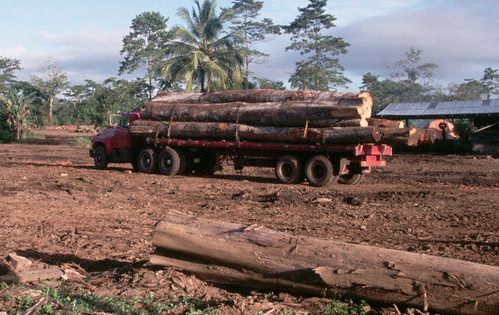

Illegal Drug Trafficking Conflicts with Conservation
Though authorities have revealed little about the circumstances surrounding Mora’s death, conservationists involved with the Moín project are pointing fingers at drug traffickers and poachers. “The same people who want to sell and use drugs are the same people who come to the beach and kill turtles,” said Didiher Chacón, WIDECAST’s Costa Rican director.
One week after Mora’s murder, police seized 1,200 kilograms of marijuana near the beach where he was killed, and earlier this year, more than 1,700 kilograms of cocaine were found in the same area. The danger in the region has driven several volunteer programs away from the Caribbean, despite the coast’s importance for nesting leatherback turtles, an endangered species.
“When we first were getting started, we tried to work on the Caribbean coast and decided not to work there,” said Randall Arauz, president of Costa Rica’s Marine Turtle Restoration Program (PRETOMA) and a leading sea turtle expert. “We were getting threats, and we decided it was too dangerous.”
The large amount of illicit drugs being smuggled through the area – mostly cocaine and marijuana – has prompted some authorities to cast Mora’s murder off as a purely geographical problem. The day after the murder, Costa Rican Vice President Alfio Piva called the slaying an “accident” in an interview on CNN. He later defended his remarks on Twitter, citing the province of Limón’s high murder rate, adding that anyone working in the area should know the risks.
While Limón does have the highest levels of crime of any province in the country, other remote ecological areas are also struggling with invasion from drug traffickers.
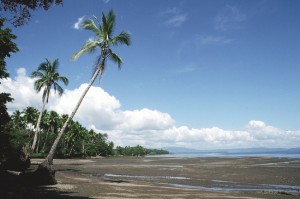

Reuters reported that police have found drug trafficking encampments in the mangrove swamps of Manuel Antonio on Costa Rica’s Pacific coast. Drug runners would reportedly stay in the park while awaiting cocaine shipments from Colombia, the report noted. The Reuters story prompted a swift and angry response from government officials, who issued a press release citing the achievements of Costa Rica’s soft war on drug trafficking.
But Manuel Antonio National Park administrator Mauricio Salazar confirmed the reports, telling The Tico Times that, “Park rangers often find evidence of drug trafficking activity. They find gas cans and other signs that people have been entering the national park.”
According to Salazar, the park works with the Coast Guard in drug trafficking cases, but park rangers are the ones on the front lines protecting the parks. “Hunters use simple guns in the parks; drug traffickers carry complicated weapons,” SINAC Director Rafael Gutiérrez said. “The job of the park ranger has changed from just protecting the environment to acting like police.”
In Punta Burica, Costa Rica’s southernmost and smallest Pacific peninsula that shares a border with Panama, problems have arisen due to lax border patrol. Punta Burica is turf shared by conservationists and drug smugglers, and according to Tigre Salvaje Wildlife Sanctuary founder David Teichmann, conflicts between the two are not uncommon. In nine years working for Tigre Salvaje, Teichmann says he has been beaten, shot at and robbed while monitoring turtle nests. Once, he said, drug trafficking poachers burnt an effigy of him on the reserve’s beach.
In January 2012, authorities made one of the biggest cocaine busts in Costa Rican history. Unlike most of the country’s drug seizures, the police didn’t find the drugs at a border crossing. Instead they found nearly a ton of cocaine buried in 27 sacks in the mud at Palo Seco, on the central Pacific coast.
The bust turned the spotlight onto remote national parks, alerting authorities to their potential as drug-smuggling and marijuana-growing hot spots. “What we have seen over the past few years is an increase in drug seizures and drug-related activity,” Gutiérrez told The Tico Times. “Logging, hunting and illegal mining continue to be problems in the parks,” he added.
Gold Mining in National Parks
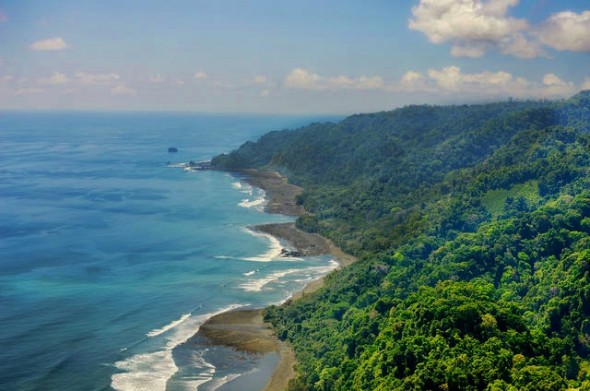

The Río Tigre in Puerto Jiménez runs along the border of Corcovado National Park, Costa Rica’s most biodiverse protected area set on the wild Osa Peninsula. The river is often packed with gold miners prying rocks from the riverbed in hopes of finding just a tiny speck of oro.
Improvised miners [in Corocovado National Park on the Pacific Coast of Costa Rica] dig tunnels up to 40 meters in length or destroy mountainsides in a work called “terracing” and with destroying one of the richest places in flora and fauna worldwide. There is 3% of the planet’s biodiversity and 50% of Costa Rica species in Corcovado, say officials of the Ministry of Environment and Energy (MINAE).
But on the first Saturday of Semana Santa, or Easter Holy Week, the river is empty save for two men. After a morning’s work there is barely a glint of gold visible in their pan of dirt. It’s less than $30 worth, a pittance compared to what is available over the hill in Corcovado. “The park is full of gold,” said a man who called himself Edgar. “I’ll go in for a day and come out with so much more than I do when I work here.”
It’s enough gold for Edgar, who was arrested twice for illegal entry into the park, to risk getting caught a third time by park rangers, which he says would result in an eight-year prison sentence. For Edgar, it’s worth the risk, because he can get as much as $550 for a day’s work inside Corcovado.
“For the last few years, the situation has been deteriorating,” said Álvaro Ugalde, former director of the Costa Rican National Parks System and a “father” of Corcovado National Park. “Right now the park is being re-invaded by a few hundred hunters and miners.” According to Ugalde, the environmental consequences of these invasions is devastating. A study of the area following a similar gold-mining rush in the 1980s revealed erosion in some of the rivers that could take hundreds, if not thousands of years to recuperate.
Illegal hunting also is taking a toll on Corcovado. A yearly study conducted by Costa Rica’s National University showed a marked drop in the number of white-lipped peccaries and endangered jaguars roaming the park. These hunters not only present a danger to the park’s wildlife, but also to those tasked to protect it. The Environment Ministry’s control and protection unit is the park’s first and last line of defense against the hordes of illegal entrants, and their job puts them in daily contact with criminals damaging the environment.
According to a briefing by Costa Rican police, hunters and miners found in Corcovado and other national parks are often armed and often resist arrest. “Park rangers in every national park in the country are charged with guarding natural resources, and as with any natural resource there are people who want it,” Salazar said. “Many illegal hunters will enter parks with guns and in some cases park rangers will get hurt. In the worst case they will get killed.”
Poaching of Sea Life in Isla del Coco
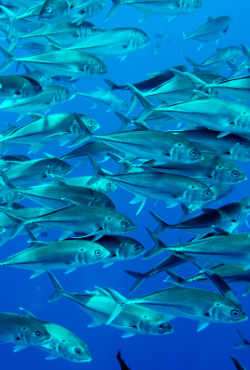

The death of a park ranger is now a daily fear of administrators at Isla del Coco National Park, 340 miles off the shore of Costa Rica’s Pacific coastline. While the far-flung Pacific island is known to the world as the setting for “Jurassic Park,” fishermen know of it as a marine life Mecca, and even though fishing is illegal within the park’s boundaries, plenty of cash-hungry mariners risk fines and jail sentences to sink their nets into the island’s fisheries. See the film Sharkwater for more background on the issues.
Like every other national park, it is up to the control and protection rangers to catch and expel fishermen from the park, but about eight months ago the fishermen began fighting back. “Calls started coming in over the park’s radios,” said Geaner Golfín, a park administrator. “They all know the rangers’ names; they know where they go on their time off in Puntarenas. They’ll say that they’re going to find them in town and that they’re going to kill them.”
According to Golfín, Isla del Coco’s control and protection team only has one boat for tracking down trespassers. Yet there are about 16 to 18 boats fishing in the park on any given day. With these limited resources, Golfín says that despite an increase in threats over the past few months, the park has been unable to provide protection for its staff.
“We just don’t have the support for that,” he said.
Administrative Changes, Arming Rangers?
Back at the auditorium in the capital, park rangers quietly listened to the presentation of a new bill that, if passed, could make their jobs safer. Though still on the drawing board, the bill would reorganize the national park system to allow the hiring of more park rangers and the purchase of more equipment – including weapons. “The national parks are in crisis,” said Mario Boza, an early co-founder of the parks system. “This crisis is administrative, not necessarily economic.”
According to Boza, the crisis can be traced back to a 1998 law that reorganized the administration of the country’s protected areas. The law created SINAC and consolidated all of the country’s protected areas under one administrative umbrella. Fifteen years later, Boza claims the parks have suffered, and more importantly, he says, so have park rangers.
“This plan puts the emphasis back on those protecting the national parks,” Boza said. “They are the ones who sacrifice it all.”



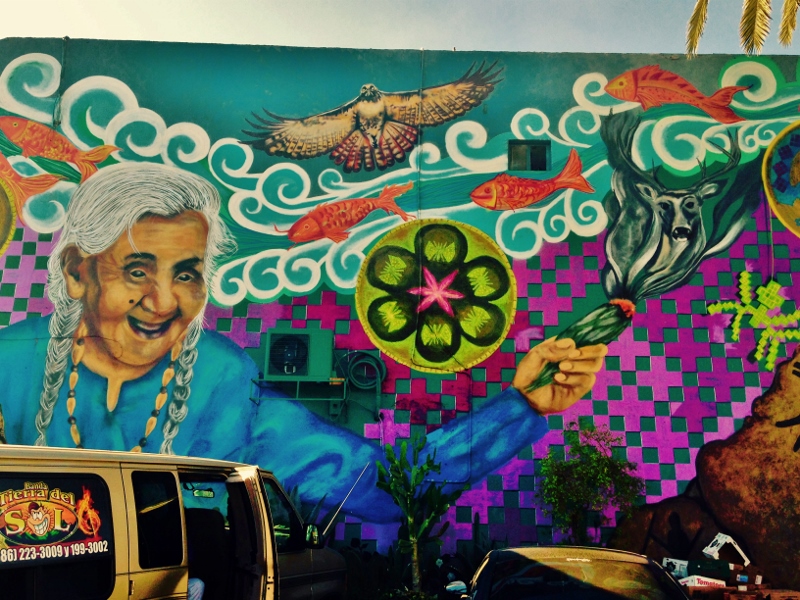
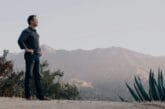




Pingback: Sharkwater: Sea Shepherd Battles Pacific Shark-fin Poachers | WilderUtopia.com
Pingback: Caribbean Sea Turtle Activists in Costa Rica Ask for Help | Repeating Islands
Pingback: Great Canal of Nicaragua: Environmental Ruin and Fiscal Folly | WilderUtopia.com